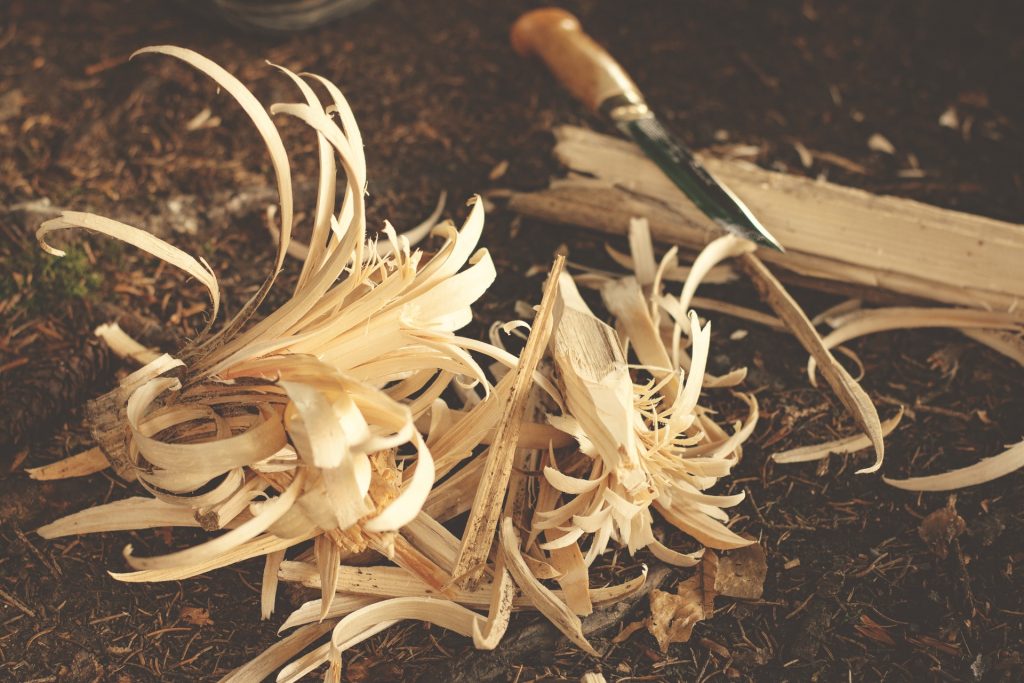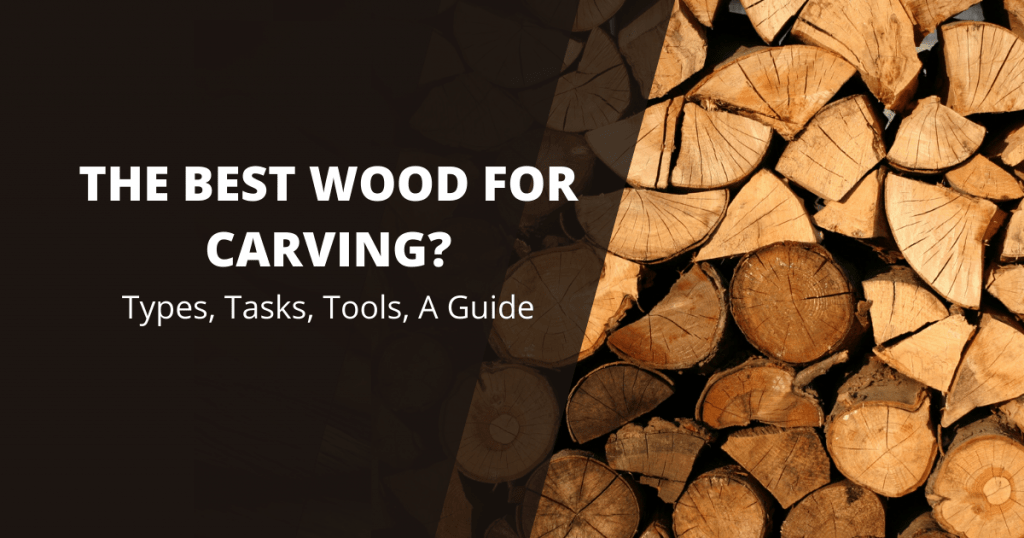So you’ve decided to start the relaxing, enjoyable and creative hobby of wood carving and woodturning. With so many different types of tools, wood, and other accessories to choose from, you’d be forgiven for wondering which piece of wood to use for what!
In this article, we are going to concentrate on perhaps one of the most burning questions you might need to ask when beginning to wood turn, which is what type of wood is the best wood for carving? …along with some information on why it’s important to choose the right wood.
We’re also going to take a look at the other considerations you need to take on board regarding your wood choices.
Let’s start first by taking a look at the quick takeaway answer as to what kind of wood is the best for carving.
What is the best wood for carving? Choosing the best wood relies on your skill level as a woodturner, along with the project you are undertaking. These are important considerations for the type of wood you choose. Hardwoods are better for more durable items like furniture, but softwoods are best for whittling or decorative pieces.
There are lots to consider before you begin your journey in the creative art of woodturning. Are you more interested in work with intricate designs and smaller pieces, or perhaps you’re going to try your hand at furniture or other large pieces?
Well, now we’ve given you the quick answer as to what is the best wood type to use when enjoying woodturning, in order to help us to understand a little better, let’s start by looking into why it’s so important to choose the right wood.
Contents
Why is it so important to choose the right wood?
There are so many different kinds of timber to use when woodturning, that you’ll almost certainly be spoiled for choice – or overwhelmed – or both. So, how do you find the best wood for your project? Let’s look below at a few of our best tips to help you choose.

The wrong type of wood!
One of the main reasons why woodcarving can seem to be difficult for many of us trying the craft for the first time is simply starting with the wrong type of wood for the job.
The wrong choice of wood can damage your carving tools and could also cause accidents.
Sturdy wood
In general, it’s important to start with a malleable but sturdy wood when working on your carving projects. This type of wood will be perfect for when you are:
- Whittling
- Relief carving
- Chip carving
- Carving in the round
12 best wood types for woodturning
We couldn’t let you come this far without finding out which are some of the best woods to turn, craft, whittle and carve.
Here are 12 of our top suggestions for great woods to enjoy the ancient craft of woodturning.
- Figured Maple
- Walnut
- Cherry
- Boxelder
- Rosewood
- Ash
- Red Elm
- Pacific Madrone
- Spalted Maple
- Popular
- Bradford Pear
- Oak
- Cocobolo
Your skill level
It’s worth remembering that the type of wood you choose may also be influenced by your level of skill as a woodworker. Some types of timber do require a higher and more refined level of skill.
Popular and soft Maple
An excellent beginner wood to use is soft maple or Poplar. Both have soft properties which make them easy to turn if you have a lower skill level, or have just begun your wood carving journey.
If you are then something like this beginner carving set on Amazon is perfect for this!
So what other kinds of considerations are important when you are choosing the best wood to carve? Is it important to match the wood for your project? Let’s take a look below and find out.
“The wrong choice of wood can damage your carving
tools and may even cause accidents”
What are you making?
Woodturning can include all kinds of different carving projects. For instance, are you looking at producing some artistic looking sculptures? Maybe you’re trying your hand at fashioning some beautifully handcrafted musical instruments, or maybe even furniture.
Softwoods are perfect for more delicate work and hardwoods are of course required for pieces such as furniture and other more often used items.
Let’s look in a little more depth below as to how you choose the wood that is perfect for different kinds of purposes.
“Softwoods are perfect for more delicate work and hardwoods are of course required for pieces such as furniture and other more often used items.”
Choose the wood based on its function
To choose the best type of wood, it’s important to know what your end purpose is for your project.
For instance, if you are turning wood to be used as a kitchen accessory such as a bowl or a spoon, it will need to be a wood that is durable enough to withstand the wear and tear, but also a wood which absorbs little moisture.
If you’re looking at carving a really intricate or delicate design for example, or a piece which will need to take a lot of wear such as a piece of furniture? These are all important considerations before you make your final wood choice.
For example, a bowl made out of hardwood like Oak or Ash resists moisture well but is stained very rapidly in contact with oils. Therefore, it cannot be used as a regular bowl for eating as the oils inside food will stain the wood – unless you give it the proper food safe treatments first.
However, if whittling is your thing, or you’d simply like to make a decorative piece such as a plate or wall hanging, you have the freedom to use either soft or hardwood.
“a bowl which is made from ash or oak although it is very moisture resistant will stain quite badly when it comes into contact with many of the oils contained in food.”

Softwood is good for your tools
One of the recurring problems woodcarvers face is our tools becoming blunt by using the wrong wood type.
Many professional woodcarvers agree that using a softwood will help prolong the lifespan of your carving tools.
Woods such as basswood or pine are excellent for producing good quality carving work with minimum effort. Due to the soft properties of the wood, they’re pretty easy to carve, which will keep your carving tools in good condition.
However. hardwood such as white oak can be difficult to work with and is likely to do some damage to your carving tools if you don’t handle the project correctly. The blade slipping is a common occurrence using this type of wood, given that the wood is so dense. Do be careful when using hardwoods like this and wear appropriate safety wear.
Here’s my best choice of safety gloves because they’re cut-resistant but still allow for a power-grip which is what you need when carving hard or softwood. And they’re still available on Amazon at a good price!
Now we’ve looked at the best woods to help prolong the life of your tools and also give good results, you might be wondering if there is any wood that is not great or even damaging to carve with. Let’s take a look below.
“hardwood such as white oak can be difficult to work with”
So is there any other types of wood to avoid? Let’s see.
Wood with a strong smell
It’s worth mentioning that any wood that has a strong smell could be bad wood and is avoided.
It may seem as if any wood is useful to turn, but remember, you’re working within the vicinity of this wood for some time, so those wood types that emit strong odors can give you headaches and make you feel generally ill after a while.
Obviously, if you’re looking to sell your work commercially. Such as artwork, decorative pieces or even furniture, you need to make sure you are only using good quality wood.
And finally…
So there you have it, your new hobby of wood carving needs a few skills, some basic knowledge and of course, the right wood for your wood carving project.
If you need any more information on the kind of wood to choose if you just need an expert to help you get to grips with your new project, check out my resources page to help you get the most out of your woodturning hobby.




